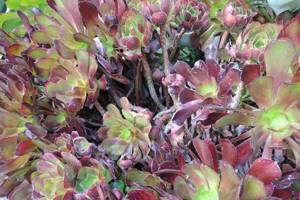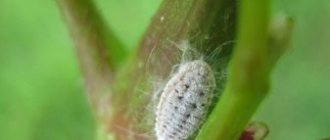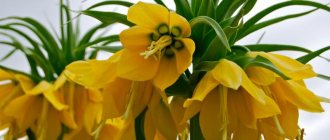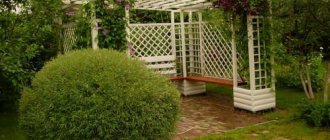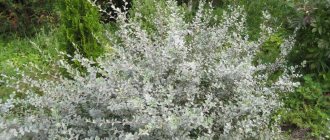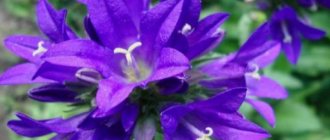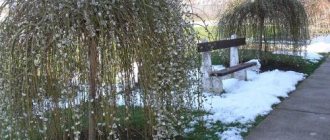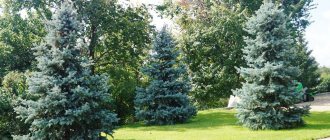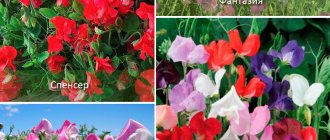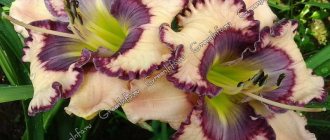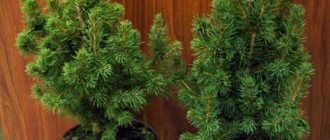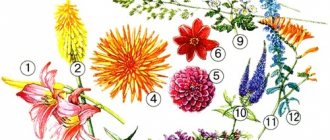Description
From the Greek “aeonium” is literally translated as “eternal”.
This is partly true: the succulent is long-lived, but still it is not eternal. Interesting! The peculiarity of these cacti is the death of the plant after flowering.
Due to species diversity, the appearance of representatives of the same family can vary greatly. So, the height of the bush ranges from 50 to 600 mm .
The plant itself is a rosette (one or several), formed from dense, leathery, diamond-shaped leaves, which is why the cactus is often called the “aeonium flower.”
The rosette is located on a long stem, but this also depends on the species, since some plants have a rather short stem .
As the plant matures and produces new leaves, the lower row of leaves dies off, causing the stem to lengthen. The root system is also noteworthy: unlike many succulents, it is well developed and branched.
Important! In addition to the underground root, the plant has aerial roots at the base of the leaf blade.
Evidence that the succulent is ready to bloom is a straight, fleshy peduncle topped with a pyramidal inflorescence. Aeonium flowers are yellow, white or red.
Due to the inherent monocarpic nature of exotic plants, the shoot dries out after flowering . If a succulent has several shoots, there is a chance to save the pet by sacrificing one of them.
Types, photos with names
The variety of plants will allow you to choose an exotic plant to your liking or create a creative mix of different cacti.
Aeonium balsamiferum
Its developed shoots are more like the branches of a bush, each topped with a dense rosette. The name of the succulent was based on the specific smell of the plant.
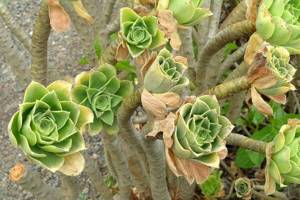
Noble (Aeonium nobile)
A dense large rosette is located on a short stem, almost invisible from under the leaves. The leaf plates are slightly curved from the edges towards the center, which gives them a resemblance to grooves.
The diameter of an adult plant can reach half a meter. During flowering, the noble aeonium produces a tall peduncle, which is crowned with an umbrella inflorescence with yellow petals.

Burchardii (Aeonium burchardii)
It differs in the color of the leaves (they are swamp green) and the size of the small rosettes (about 100 mm).
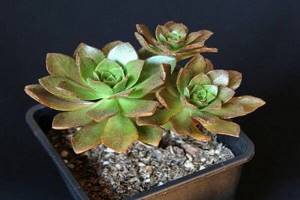
Virgin (Aeonium virgineum)
This variety of succulent grows without a stem and produces many rosettes tightly adjacent to each other. The color of the leaf blades is optimistic green, the leaves are velvety, and in young plants they are slightly wavy. The cactus produces a light balsamic aroma.
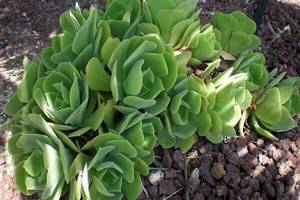
Important! The second name is groundcover aeonium, since it tightly covers the soil with its rosettes.
Wavy (Aeonium undulatum)
The cactus looks like a bush with several powerful shoots. Its trunk is noteworthy, having a silvery tint and covered with brown scars. Each shoot is crowned with a large loose rosette of dark green color.
The leaves are spade-shaped, narrowed towards the base, and have a slightly wavy edge. When flowering, it produces pyramidal inflorescences with ocher-yellow corollas.
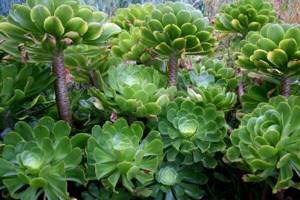
Decorative (Aeonium decorum)
The bush is quite compact, but its shoots are multidirectional. They are crowned with beautiful (some compare rosettes to roses) dense rosettes. The leaves have pointed tips and a beautiful burgundy-green color.
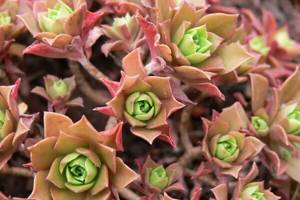
Domestic (Aeonium domesticum)
This is a real miniature tree. The dense central trunk is vertically oriented. Closely spaced shoots with large loose rosettes extend from it. In addition, the shoots tend to bend towards the top. When flowering, a long peduncle topped with 7 yellow flowers appears.

Arboreum (Aeonium arboreum)
Large shoots topped with dense rosettes extend from an erect stem with a woody base. Thanks to the work of breeders, several interesting varieties were obtained, for example, black aeonium.
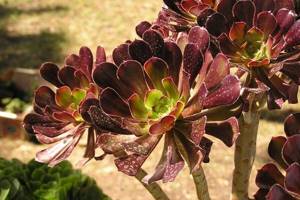
Golden (Aeonium holochrysum)
The stem of this succulent is branched, the shoots are drooping, with large beautiful rosettes made up of elongated diamond-shaped green leaves. The reason for the name is the golden inflorescences that the cactus produces when flowering.
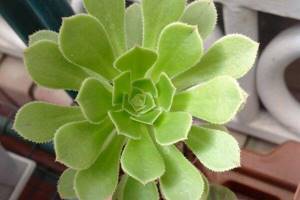
Canary (Aeonium canariense)
The stem of the succulent is so short that tightly planted rosettes with light green leaves are located almost on the ground. An adult plant can reach half a meter in diameter, and the peduncle can be thrown to a height of 80 cm.
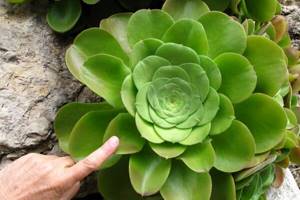
Kiwi (Aeonium kiwi)
An elegant shrub with highly branched shoots, it is a hybrid form of Aeonium haworth, but its exact origin is unclear. The height of the plant does not exceed 50 cm, but the diameter can exceed this figure. The plant is very beautiful.
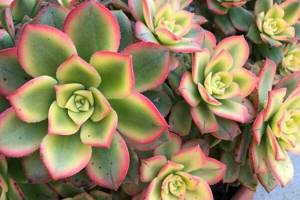
Lindleya (Aeonium lindleyi)
The stem of the cactus becomes woody at the base and produces many side shoots. At the top of each shoot, a dense rosette of dense green leaves, covered with barely visible fibers, is formed. When flowering it produces yellow corollas.

Aeonium tabulaeforme
The stem of the plant is very short, but the flat wide rosette consists of many leaf plates arranged in tiers. The leaves, narrow at the base, widen towards the tip.
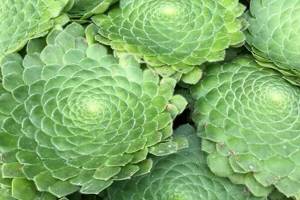
Schwarzkopf (Aeonium schwarzkopf)
Due to its dark burgundy color, this hybrid variety of tree-like aeonium has several names:
- aeonium black;
- tree black.
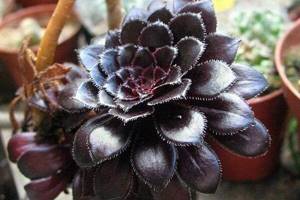
Haworth (Aeonium havorii)
A very beautiful variety with large lanceolate leaves. They are light green, but due to the burgundy border along the edge of the leaf they look silvery. The stem is short, located directly under the rosette.
Other varieties that are popular among succulent lovers include:
- Aeonium sedifolium;
- aeonium tricolor;
- Aeonium maskensee.
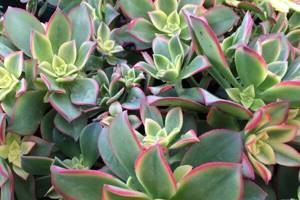
Home care
The cactus is unpretentious and tolerant of living conditions, however, there are a number of general recommendations that must be followed .
Aeonium pot
When choosing a container for a new pet, pay attention to two factors:
- pot stability;
- presence of a drainage hole.
You should not take a large flowerpot. The best option is low, but fairly stable and wide . The material doesn't matter much.
Priming
Like any succulent, aeonium is undemanding to soil . It will successfully grow and develop on a poor clay substrate. But for rapid growth, it is still better to choose a universal mixture for cacti.
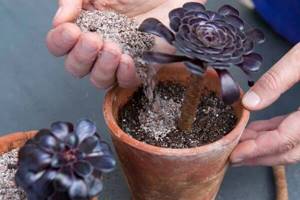
Lighting
The cactus is light-loving; it requires a lot of bright sunlight ; In winter, it is even recommended to place a phytolamp nearby for additional lighting.
However, an aeonium located on a southern windowsill in summer must be shaded during the midday heat to avoid burns on the leaves.
Temperature
With a pronounced love for bright light, the succulent does not particularly favor high temperatures . The optimal mode for it is from 20 to 25 °C. In winter, the temperature can be reduced to 18 °C.
Watering
Watering should be done moderately and carefully.
Attention! Make sure that no water gets into the outlet when watering. The liquid accumulated here provokes rot and death of the green pet.
Usually water the aeonium when the top layer of soil has dried well; it is not worth moistening more often. Moreover, the flower itself signals the need for watering by hanging its leaves.
View this post on Instagram
Posted by Elena Aloyarova (@elenaaloyarova) Oct 15, 2021 at 1:24 PDT
Humidity and spraying
Air humidity is not decisive for the development of a flower. It easily adapts to the dry atmosphere of the apartment and does not require spraying (on the contrary, they should be avoided).
If there is a need to clean the leaves, it is more useful to wipe them with a damp cloth than to spray the cactus with a spray bottle.
Top dressing
With a high-quality nutrient substrate, you don’t need to apply fertilizer at all in the first year. If the substrate is not nutritious enough or the flower has been growing in the same pot for several years, it is worth applying a universal liquid fertilizer for succulents every 30 days . The product is diluted in water for irrigation according to the instructions.
Transfer
Usually, young plants need a larger container every two years; for mature plants, this procedure is recommended every 3–4 years.
Trimming and pinching
In general, aeonium does not need any pruning or pinching . Only dried leaves and those shoots that have released a peduncle are removed in order to preserve the entire plant.

Rest period
In winter, the flower stops active development and stops growing. At this time, reduce the already moderate watering to a minimum, cancel feeding and lower the temperature in the room .
Plant care
In temperate climate conditions, characteristic of central Russia, the plant cannot be grown in open ground, as it does not tolerate frost. But many gardeners place the shrub indoors or in a winter greenhouse in the winter, and move it outside in the summer. But still, Japanese euonymus is most often grown at home.
The Japanese domestic euonymus, like its wild relative, grows quite quickly. Its shoots appear with a certain frequency, in waves. With proper care, Japanese indoor euonymus will have two growth periods per year - autumn and spring.
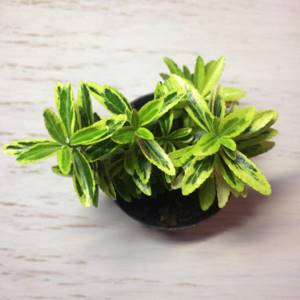
At the end of each growth period, new large buds appear at the tops of the grown shoots, from which new stems begin to grow in the next period.
Japanese euonymus, like other indoor plants, loves abundant, but at the same time diffused lighting. Do not place it in direct sunlight. However, some varieties require particularly bright lighting; this should be taken into account when growing Japanese euonymus in order to provide it with proper care at home.
The temperature in summer should range from eighteen to twenty-five degrees Celsius. In winter, the bush goes into a dormant state and the temperature must be lowered to twelve degrees Celsius. If the temperature is higher and the humidity is insufficient, its leaves will fall.
Watering the plant
Watering is done with settled or boiled water at room temperature. It should be regular and plentiful. Complete drying of the soil is unacceptable, as this can lead to the death of the plant. At the same time, stagnation of water also negatively affects the bush, so special attention must be paid to watering. In winter, watering is reduced.
Air humidity should be moderate. Infrequent spraying is beneficial for the plant, but the main thing here is to keep it in moderation. Also, to protect against diseases and pests, sometimes take a shower with warm water.

Feeding is done once a week at those moments when the plant begins to grow. Organic and mineral fertilizers are suitable for this. At the beginning of the growth wave, it is necessary to apply nitrogen fertilizers, during the most intensive period - complex fertilizers, at the time when growth ends and buds are formed, fertilizers should be potassium and phosphorus. In winter, feeding stops.
Pruning must be timely; in addition to limiting growth and crown formation, dried and weak shoots are removed.
Soil for growing
When planting sprouts, almost any indoor soil mixture sold in stores will do. A special feature is the addition of baking powder. If you prepare the mixture yourself, it should consist of leaf soil, turf soil, humus, sand
Transplantation and propagation
Young shoots are replanted once a year in the spring. As the euonymus grows, it is replanted once every three years. In adult plants, the top layer of soil is replaced once per year.
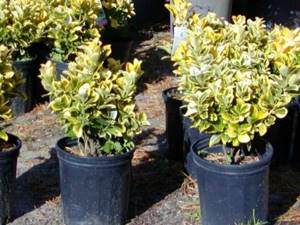
Euonymus propagates by cuttings. To do this, take the top young and strong shoots, which have one bud and three internodes. Reproduction by seeds is allowed. But this method is much more complicated; the seeds require preliminary stratification and germination.
Reproduction
You can get new plants in two ways:
- growing from seeds;
- cuttings.
Seeds
You can grow aeonium from seeds if it is not a hybrid form. At the end of winter, prepare a container with a universal substrate for succulents , moisten it, and spread the seeds on the surface.
Attention! The seeds are very small, so try to distribute them evenly over the surface.
There is no need to sprinkle planting soil. The container is covered with film or glass and placed in a warm, well-lit place.
The first shoots appear by the end of the second week. Crops need to be ventilated daily. After about 30 days, the seedlings can be planted.
Cuttings
Cuttings are prepared only from the apical part of the plant , cutting off the trunk a few centimeters below the rosette.
The open area is sprinkled with charcoal dust and allowed to dry a little, during which time a pot with a substrate is prepared for the cutting. Rooting should be expected 45–50 days after planting.
Japanese euonymus: planting and care
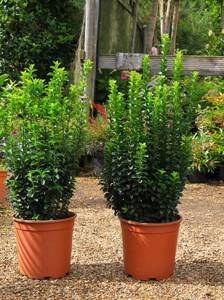
The shrub is not picky, so it does not need to look for a special place for planting. It does equally well in the shade and in the sun. In a shaded area, the foliage takes on a blue-green tone with white splashes. In the sun, the leaves turn green with a slight pink tint.
Japanese euonymus should be planted in moist soil. The hole is dug in such a size that it is twice as large as the root of the seedling. Drainage should be laid at the bottom. Broken brick, expanded clay, etc. are suitable for this. Fertilizers are then added. You can use rotted humus or compost. After planting, the soil around the plant is compacted. It is important to regularly water the seedling during the first time after planting.
Bloom
The peculiarity of aeonium is that it blooms once in its life, and then dies . Hybrid forms may not produce buds at all, but this does not spoil these beautiful plants.
In some cases, when a peduncle appears on only one rosette on a bush, the plant can be saved, but this is a great success. Usually they wait until after flowering to prepare cuttings or collect seeds and propagate the cactus.

Japanese euonymus - care
Since the plant dies even with slight frosts, it is not cultivated for growing outdoors in an area with continental temperate climatic conditions, which characterize the regions of the central part of our country. Gardeners found a solution in that a bush planted in a pot is kept outdoors in the summer and placed indoors in the winter.
Although for the most part, Japanese euonymus grows exclusively at home.
Japanese home euonymus grows very quickly. The branches of the plant grow from the trunk periodically; some time after one wave, another wave of growth occurs. This happens in two stages, in autumn and spring. After these periods of growth, newly formed buds appear on the upper part of the new branches that have appeared, giving rise to the next generation of branches in the next round.

- Japanese euonymus prefers bright, but diffused lighting. Do not place it directly under the sun. Several varieties require even more light for normal growth; when cultivating Japanese euonymus, you need to properly care for them at home.
- The temperature in the hot summer should not exceed twenty-five degrees Celsius. During the winter period, there comes a time of rest for the plant, and the temperature should be reduced so that the room is no more than twelve degrees. Celsius. If this limit is exceeded, there may come a time when the plant's foliage falls off.
- Watering should be done with water at room temperature, which has stood for several hours in sunlight. At the same time, you should not spare the water, although some time after watering you need to drain it from the pan to avoid stagnation. The watering time should be chosen so that it is done when the top layer of soil dries to a depth of one centimeter. Completely dry soil under the plant means its death. In winter it needs to be watered less.
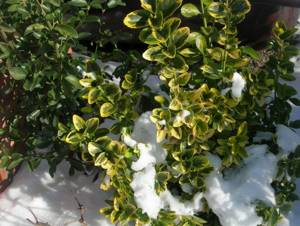
- In a room intended for growing shrubs, it is necessary to maintain average humidity. It is allowed to spray it occasionally, but without excess.
- You need to feed once a week, when the plant begins to develop intensively. You can use organics and min. fertilizers When the time of growth approaches, nitrogen containing compounds are added to the soil, and complex ones are added to the soil during the most vigorous period of growth. The last feeding of the year is done after growth has finished, when buds form on the plant. During this period, fertilizers containing potassium and phosphorus are used. You can't feed it in winter.
- Shrub pruning must be done on time , it is used to limit growth and form the correct shape of the crown, and at the same time dried branches are cut off.
Soil for planting
A variety of purchased soil will be suitable for planting, which can be purchased at specialized flower sales points. In this case, you need to add a small amount of reagent to loosen it. When preparing it with your own hands, you will need humus, sand and soil.

Transplantation of euonymus and its propagation
Newly germinated seedlings must undergo a transplantation procedure in the spring. Over time, the plant can be replanted every three years. When the tree is fully grown, its top layer of soil is only replaced.
Euonymus propagation is carried out by separating cuttings from the plant. For this purpose, newly grown shoots with several buds are used.

The plant can also be propagated using seeds, which requires much more effort and labor.
We invite you to get acquainted with one more plant - lilac, a magnificent garden decoration.
Possible problems with growing aeonium
Although aeonium is unpretentious, you may encounter some difficulties when growing it.
Shrinks after flowering
Unfortunately, this means that the flower dies - the natural behavior of a monocarpic plant.
Yellow spots appear on the leaves
These are signs of sunburn. Try moving the cactus a little away from the window so that it does not get direct sunlight, or shade it a little.
The leaves drooped and seemed to wither
This is how the aeonium signals the need to water it.
Leaves fall off and turn black at the base
When watering, water gets into the outlet and due to the tight fit of the leaf plates, rot develops. Let the flower dry and practice only watering under the outlet.
